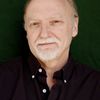For the past several days here, and for more to come, I am counting down the days to the atomic bombing of Japan (August 6 and August 9, 1945), marking events from the same day in 1945. I've written hundreds of article and three books on the subject: Hiroshima in America (with Robert Jay Lifton), Atomic Cover-Up (on the decades-long suppression of shocking film shot in the atomic cities by the U.S. military) and Hollywood Bomb (the wild story of how an MGM 1947 drama was censored by the military and Truman himself).
--Early today, Paul Tibbets, pilot of the lead plane, the Enola Gay (named after his mom) on the first mission, reported to Gen. Curtis LeMay's Air Force headquartters on Guam. LeMay told him the "primary" was still Hiroshima. Bombardier Thomas Ferebee pointed on a map what the aiming point for the bomb would be--a distinctive T-shaped bride in the center of the city, not the local army base. "It's the most perfect aiming I've seen in the whole damned war," Tibbets said. But the main idea was to set the bomb off over the center of the city, which rests in kind of a bowl, so that the surrounding hills would supply a "focusing effect" that would lead to added destruction and loss of life in city mainly filled by women and children.
--By 3 p.m., top secret orders were being circulated for Special Bombing Mission #13, now set for August 6, when the weather would clear. The first alternate to Hiroshima was Kokura. The second, Nagasaki. The order called for only "visual bombing," not radar, so the weather had to be okay. Six planes would take part. Two would escort the Enola Gay, one would take photos, the other would be a kind of mobile lab, dropping canisters to send back scientific information.
--Japanese cables and other message intercepted by the United States showed that they were still trying to enlist the Soviets' help in presenting surrender terms--they would even send an envoy--but were undecided on just what to propose. The Russians, meanwhile, were just five days from declaring war on Japan.
--Top U.S. officials on now centering on allowing the Japanese to keep their emperor when they give up. In his diary Secretary of War Stimson endorses a key report which concludes: "The retention of the Emperor will probably insure the immediate surrender of all Japanese Forces outside the home islands." Would offering that win a swift Japanese surrender--without the need to use the bomb? Not considered.
--Three B-29s arrived at Tinian carrying from Los Alamos the bomb assemblies for the second Fat Man device (which would use plutonium, the substance of choice for the future, unlike the uranium bomb meant for Hiroshima).
--Six years ago earlier on this day, August 2, 1939, Albert Einstein sent a letter to President Roosevelt stating the Germans were trying to enrich uranium 235--and that this process would allow them to build an atomic bomb. This helped spark FDR's decision to create the Manhattan Project. Now, the petitions from dozens of scientists who worked on the bomb project asking Truman to delay or not use the new weapon sit in limbo.
Greg Mitchell, former editor of Nuclear Times and Editor & Publisher, is the author of more than a dozen books, with three on the use of the bomb, including Atomic Cover-Up (on the decades-long suppression of shocking film shot in the atomic cities by the U.S. military) and Hollywood Bomb (the wild story of how an MGM 1947 drama was censored by the military and Truman himself).
